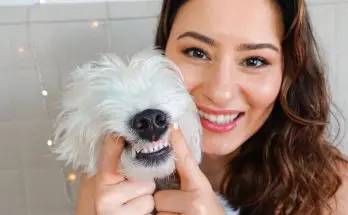Sami the Westie’s first day at training school
Last week I took the first step towards training my 4 month old Westie puppy: I enrolled him in training school. Training was something I planned long before the dog came, but I had to wait until his vaccinations are completed before I could take him. After only one class, there were many things I learned and already applied and, for example, it only took half a day after that to get my puppy to walk on leash. It was an eye opener for me and I’m really looking forward to the next sessions!

Why did I decide to train my dog?
First, because I want a well behaved dog. As simple as that. This is a dog that I want to share my life with, I want him to take part of our daily routine, our vacations, our roadtrips and everything in between. So I need to make sure he is well educated and will make our family life better, not worse. Second, because I, myself am an inexperienced dog owner, since this is my first dog. So there’s a lot I need to learn, too. I’m even joking that dog training school is more for me, than for the puppy.
How does a first dog training session go?
Luckily, I picked a really good training school. I didn’t have any references, I just googled schools in my city and picked the one that seemed the best. This school has great, heart-warming reviews from happy dog owners, some of whom have been going there for many years. The guy who runs it has over 30 years of experience in training dogs and he’s truly passionate about them, which convinced me to choose this place.
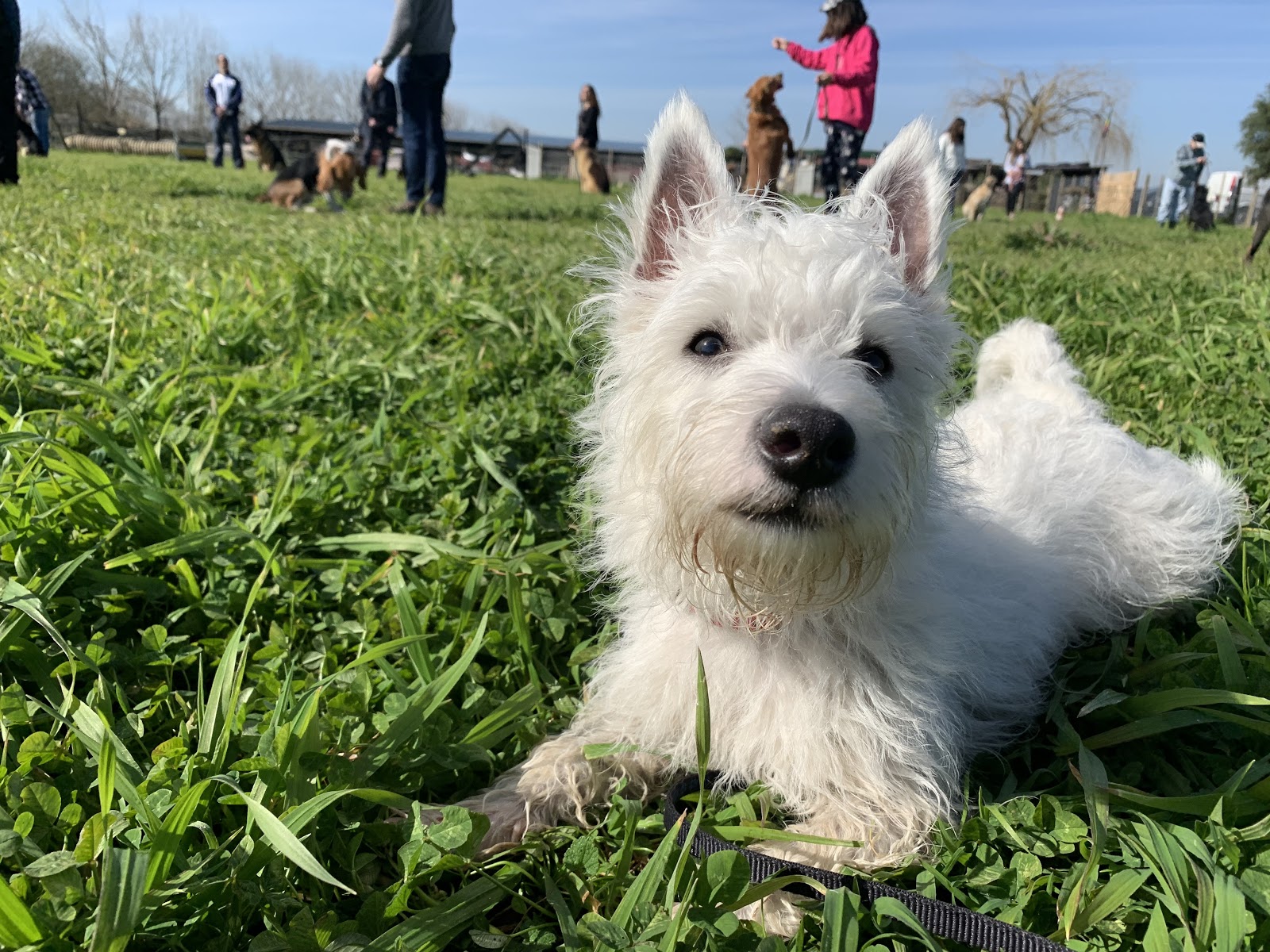
I called and booked an evaluation session. When I got there, the first thing he did was check how the dog responds to me: does he come when called? Nope. My dog didn’t even bother to look at me, he was busy smelling this new place he was at. Then, he checked if my dog would eat a treat from my hand. Once again, nope. Sami is a dog with ADHD, so not even food was interesting to him at that point.
The next thing the dog trainer did was he released his own dogs, “therapy dogs” he said, about 5-6 small-ish dogs who were curious to see who’s the new guy. He let Sami’s leash on the ground, free, to see how he responds to these new dogs. Sami mostly ignored them, busy exploring the place, and when one of the dogs tried mounting him, he promptly reacted and didn’t allow him to. After this bizarre 10 minutes and after sending the dogs back to their cages, the dog trainer explained to me what had just happened. He wanted to evaluate Sami’s personality. Based on how he interacts within a group of dogs, he’s either dominant or dominated. You can tell if he’s aggressive, or fearful and so on. Apparently, it was obvious that my dog was the dominant type, since he ignored the dogs and did his thing and didn’t allow anyone to mount him (plus, apparently adult dogs can sense dominating dogs since they’re puppies and they try and mount them into submission).
So that meant that he needs to be trained to know who’s the boss, because otherwise he will be it. I already knew that he has a strong personality and he kind of likes to be in the lead, but it was good to have that confirmed by a professional.

Then he did a few more tests and managed to quickly calm my dog and gain his trust and get him to focus. He gave him treats and made him work to take them from his hand and he used a lot of positive reinforcement. He also let Sami do his thing and whenever he would voluntarily sit or lay down, he would say the words “sit” or “lay down” and pat him, saying “good boy”, so that these tag words attach to the action as soon as he does it. In no time, he got Sami so relaxed that at one point he went belly up, to get tummy rubs, which is the most obvious way to show submission.

What I learned about harness versus collar
Since I have Sami, I’ve only used a harness on him. I did some research and got into my head that small dogs can’t wear a collar, for some reason, and that a harness gives better support and doesn’t hurt when he pulls, yada yada. But it seems I was wrong.
The trainer explained to me that harnesses are used for dog pulling competitions and that there is no other reason to use one. And that puppies are always picked up by their mom from the back of their neck, which makes it natural that they would respond to a similar stimulae. So it’s best to use a collar.
My next question was “but won’t it hurt him when he pulls?”. And he explained to me the technique that should be used when having your dog on leash, so that he won’t have to pull. The technique is, whenever he goes somewhere you don’t want him to, or does something bad like eating from the street, you just gently tug on the leash once or twice, just to get his attention. You don’t pull, you don’t shock the dog and there’s no tension in the leash. The leash should always be relaxed and hanging. You just give it a tug, so that he acknowledges you and then you say no, or come, depending on what you want.
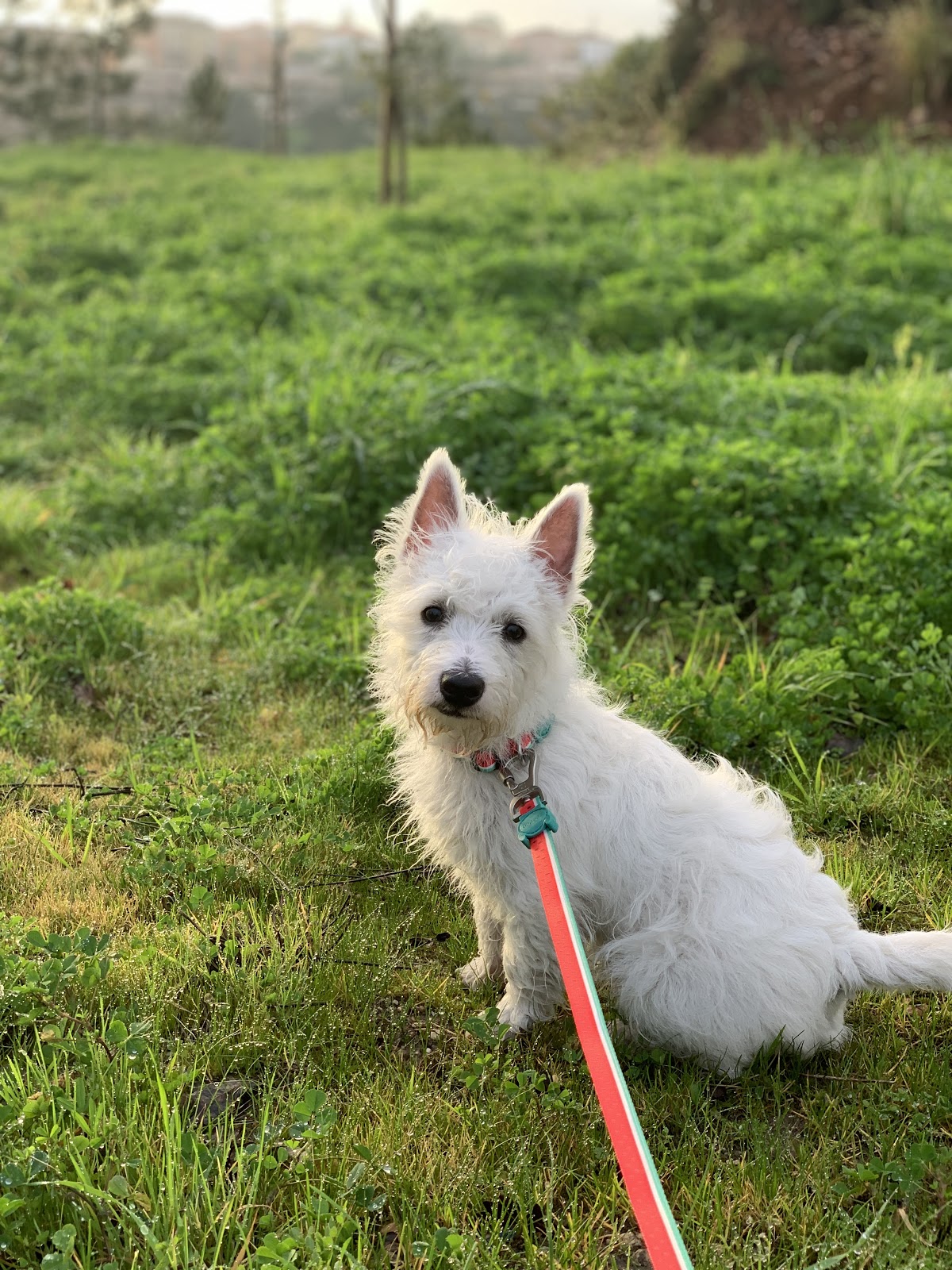
Basically, the goal when walking on leash is ideally that the leash is always relaxed, no tension, and that the puppy learns to walk at your pace, by your side, without always being pulled back.
Also, part of leash training is that the puppy needs to wear he leash at home, always. Well, except when he goes to sleep. That’s because, whenever he misbehaves (meaning does anything he shouldn’t, like chew furniture or shoes, bark at the window and other annoying and perfectly normal habits), you can step on the leash as you reprimand him and gently take charge and redirect him. It’s also useful when you are teaching him commands like “come!”, as you can first pull on the leash slowly until he comes to you, then reward the dog! It’s very effective already and the results were fast.
Crate training
Another issue that popped up during our first training session was crate training. The reason why this is so important (and I did some research afterwards) is that you want the dog to have his own space, where he feels safe and isn’t being disturbed, where he can retire to take a nap when he is tired. It’s also a good thing for him to sleep in a crate, separately from you, so that he has some independence and won’t get separation anxiety if he needs to sleep alone for one night, at the pet hotel, for example. He needs to learn to feel good being on his own, too.
The crate is also a useful tool when you’re potty training your puppy. Sami still isn’t properly potty trained, meaning he will use the puppy pads in the house, but won’t do his business outside, yet. But I learned that you can use the crate to keep the puppy there in between walks outside. For example, if you take him out every hour, but he still won’t do his business outside, when you get back in the house you put him in the crate for a while. Then you try again. At some point, he will have to go outside. I haven’t tried this method yet, but I read about it, after the trainer told me about it.
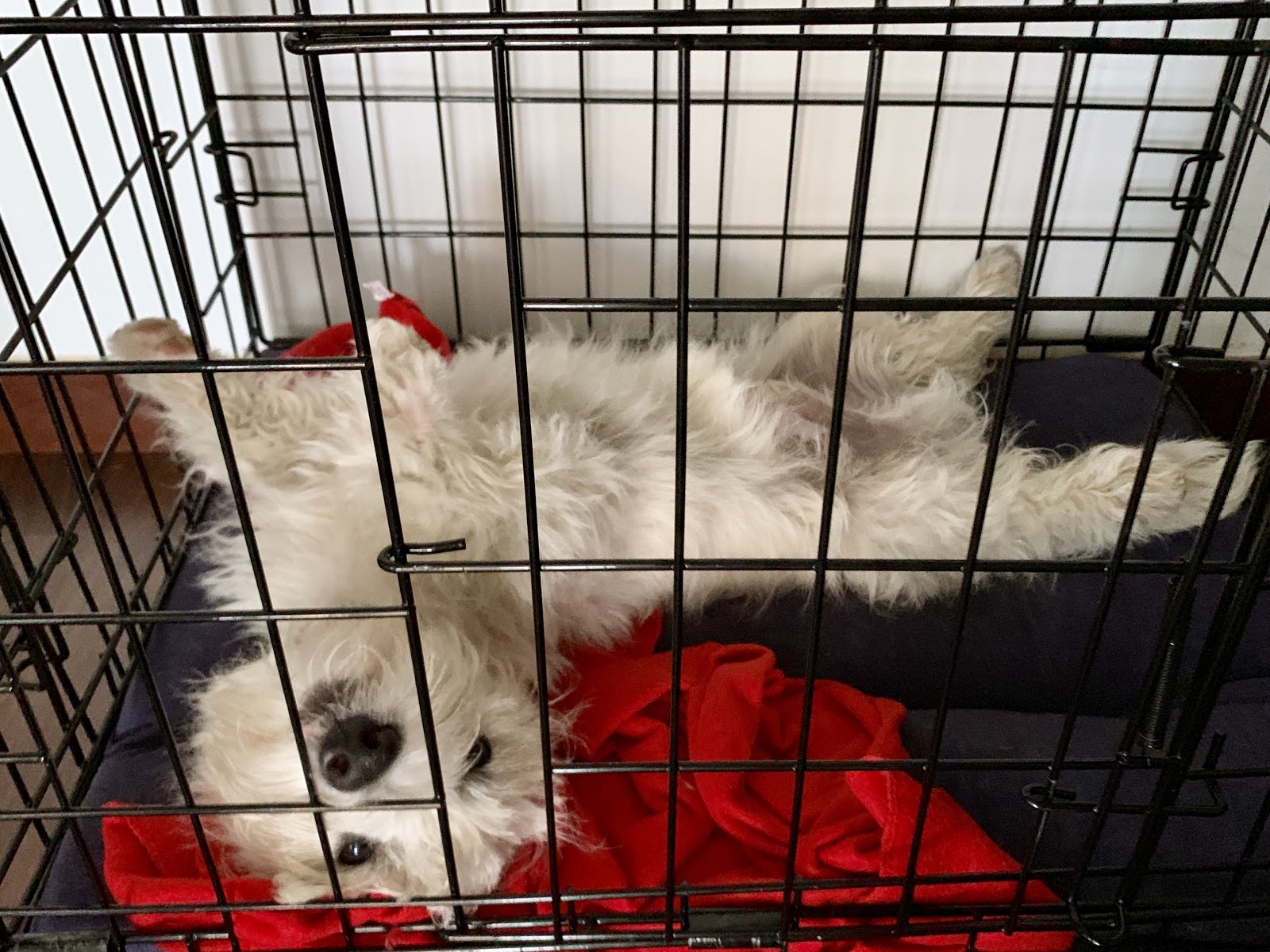
Sami has been sleeping in his crate for the past few nights, with doors closed, and he really seems to enjoy it. Honestly, I expected him to cry and bark, since he was used to sleep free, until now, but no sound. He quietly goes inside when it’s sleep time and in the morning, if he happens to wake up earlier than us, he quietly sits there and waits for us to come out of the bedroom. And we wake up around 10 am! So yeah, he’s not a morning dog.
Lately I’ve been trying putting him in the crate during daytime, too, if I have work to do and he’s sleepy. I’ll put him in his crate, close the door and he sleeps for 2-3 hours without complaining. I think he’s happy to have his very own space where he can feel safe and, if I move around the house, won’t feel the need to follow me around, as he normally does.
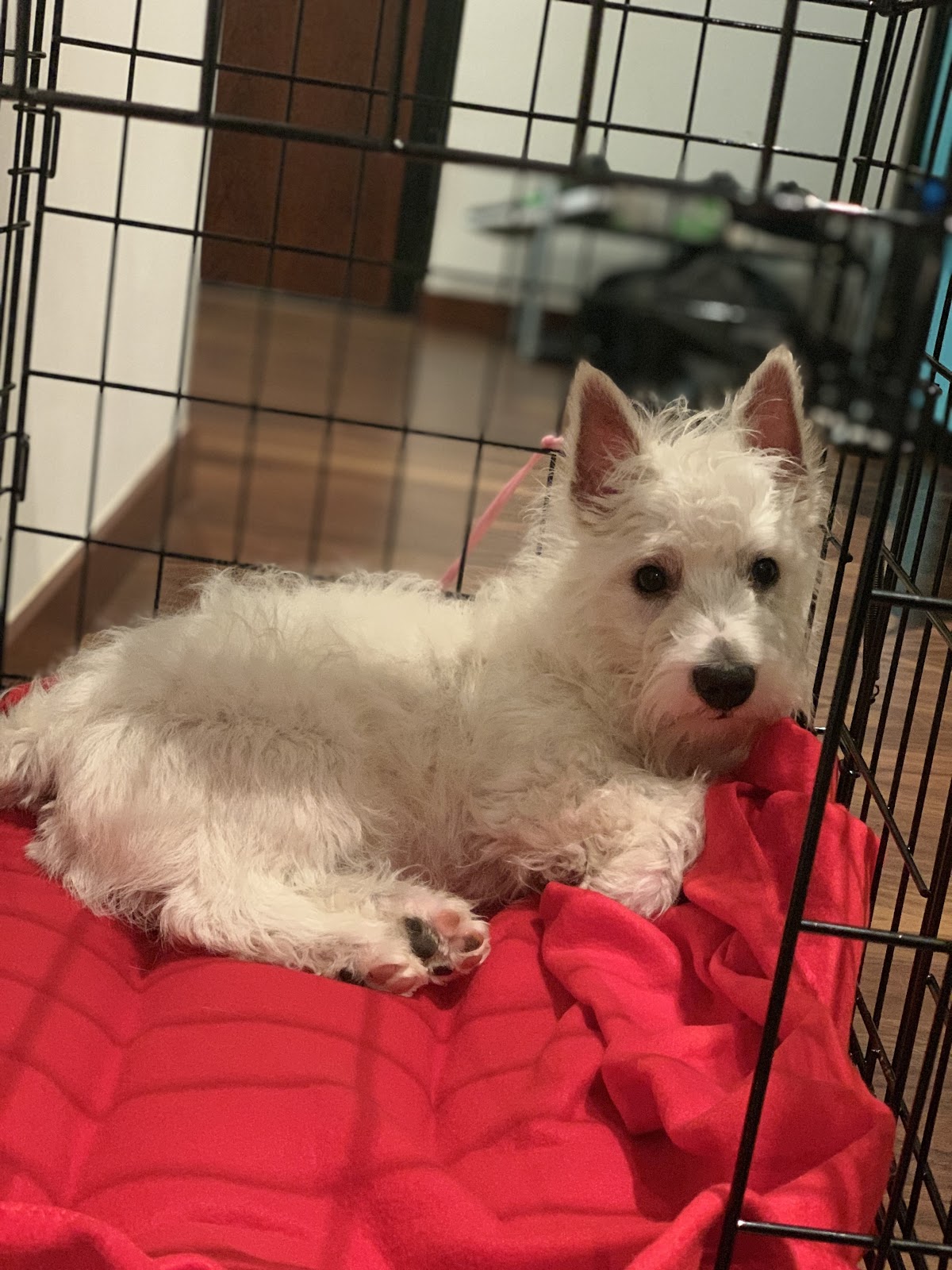
Overall, puppy school seems to be exactly what we both need, in order to get along better and better and make our bond stronger. I read somewhere that dogs have this instinctive need to please their human and, if not properly taught the communication channels to be able to do that, they can grow frustrated and even agressive, at some point. They become rebellious and do all the wrong things, because they don’t know what the right things are, they don’t understand what you expect from them. So training is the way to help your puppy make you happy, which in turn makes him happy. I think it’s a win-win and I’m really looking forward to learning, alongside of Sami, how to communicate and strengthen our bond. 🙂




